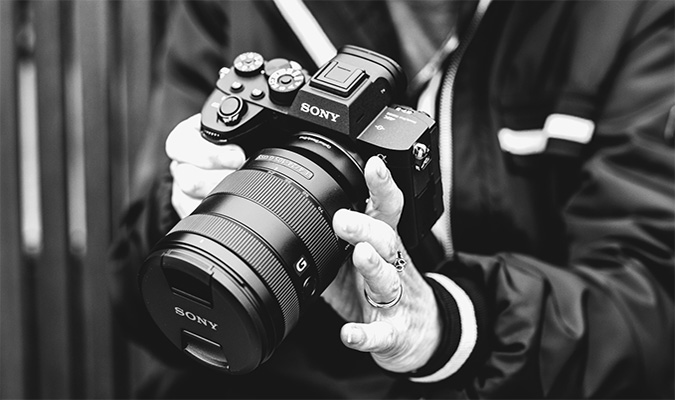BJ255 Insights
Exploring the latest trends and news in various fields.
Click Click, Who's There? Uncovering the Secrets of Photographic Storytelling
Unlock the art of storytelling through photography! Discover tips and secrets that will transform your images into impactful narratives.
The Power of Composition: How to Frame Your Story in Every Shot
The art of storytelling is vital in photography, and it begins with composition. Effective composition guides the viewer's eye and creates a narrative within each frame. Several fundamental techniques can enhance your storytelling through images, such as the rule of thirds, leading lines, and framing. By placing points of interest along the intersections of the divided frame or using lines to draw attention to your subject, you create a dynamic composition that speaks volumes. Remember, the heart of your story is in how you choose to present it, so don’t be afraid to experiment with different angles and perspectives.
Additionally, the emotional weight of your narrative can be intensified by incorporating foreground and background elements. Using depth allows you to add layers to your story, providing context and depth that invite viewers to explore the image further. Consider the colors, textures, and shapes that surround your main subject; these aspects contribute to the overall mood and resonance of your work. Ultimately, mastering composition is about blending technical skill with artistic intuition to create captivating stories in every shot.

Lighting Matters: Techniques to Create Mood and Emotion in Photography
Lighting matters significantly in photography, as it plays a crucial role in shaping the mood and emotion of an image. By utilizing various lighting techniques, photographers can evoke feelings ranging from joy to melancholia. For example, soft natural light during golden hour creates a warm and inviting atmosphere, ideal for portraits or serene landscapes. In contrast, harsh shadows and direct sunlight can add a sense of drama or tension, making the subject appear more intense. Understanding how to manipulate light effectively not only enhances the visual appeal of a photograph but also allows the photographer to tell a deeper story through their images.
One effective technique to create mood in photography is the use of backlighting. This involves positioning the light source behind the subject, which can produce a beautiful halo effect, adding depth and ethereal quality to the composition. Silhouettes are another powerful method where subjects are transformed into dark shapes against a bright backdrop, evoking mystery and intrigue. Additionally, by experimenting with colored gels or filters, photographers can imbue their work with specific emotions; a warm color can produce feelings of comfort and happiness, while cooler tones can evoke calmness or somberness. Mastering these techniques allows photographers to purposefully manipulate their images to convey the intended emotion.
What Makes a Great Photograph? Key Elements of Visual Storytelling
Photography is not just about capturing a moment; it's about telling a story. A great photograph resonates with the viewer, evoking emotions and sparking curiosity. One of the key elements of visual storytelling is composition, which refers to how different elements are arranged within the frame. Utilizing techniques like the rule of thirds, leading lines, and framing can greatly enhance the narrative structure of your images. Additionally, lighting plays a crucial role—natural light can create mood and atmosphere, while artificial light can be manipulated to highlight specific subjects.
Another essential component of a great photograph is subject matter. What you choose to capture should engage your audience and convey a deeper message. Whether it's a candid portrait, a sweeping landscape, or an abstract piece, the subject needs to have a story of its own. Furthermore, incorporating emotion is vital; expressing feelings through facial expressions, body language, or even the setting can create a powerful connection with viewers. Ultimately, the best photographs combine these elements seamlessly, resulting in an image that not only catches the eye but also lingers in the mind.